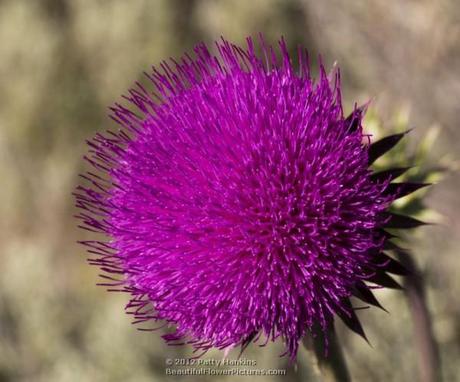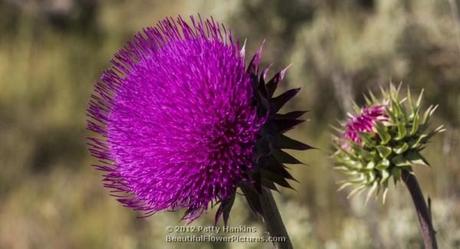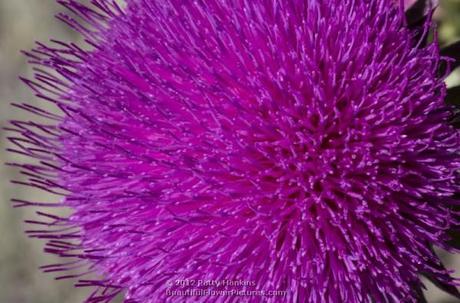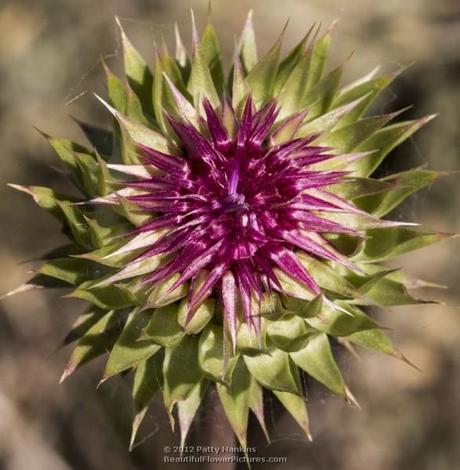Last summer while I was at Grand Teton National Park I photographed a wonderful bright pink/purple member of the thistle family. Later I learned that the Musk Thistle (Carduss nutans) is not a native plant – it’s an invasive species that causes problems worldwide.

© 2012 Patty Hankins
Thistles, including Musk Thistle, are members of the Aster family. Musk Thistles were originally native to Europe and Asia. In the nineteenth century,it was introduced in Eastern United States. Since then, they have spread to every state in the US except for Maine, Vermont, Alaska and Hawaii. It has also spread to all but the northernmost Canadian Provinces.

© 2012 Patty Hankins
Musk Thistle has been declared a noxious weed in multiple states, Canadian and Australian provinces. It grows easily in disturbed soils – and it’s distribution may be enhanced by the spread of forest fires.
As Musk Thistle spreads, it prevents other species from growing – and deprives livestock and wildlife of plants that they traditionally graze on.

© 2012 Patty Hankins
Musk Thistle grows to 3-5 feet tall. At the top of each stem is a flower head with hundreds of tiny pink-purple flowers. Each plant can produce thousands of seeds which are spread by the wind and by birds that eat them.
The only effective means of slowing the spread of Musk Thistle is to prevent it from producing seeds and by denying it access to areas where it hasn’t yet spread.

© 2012 Patty Hankins
Musk Thistle is one of those plants that can be wonderful to look at and photograph – that also has serious negative consequences for local habitats.
More information about Musk Thistle can be found at
USDA Forest Service Fire Effects Information System
